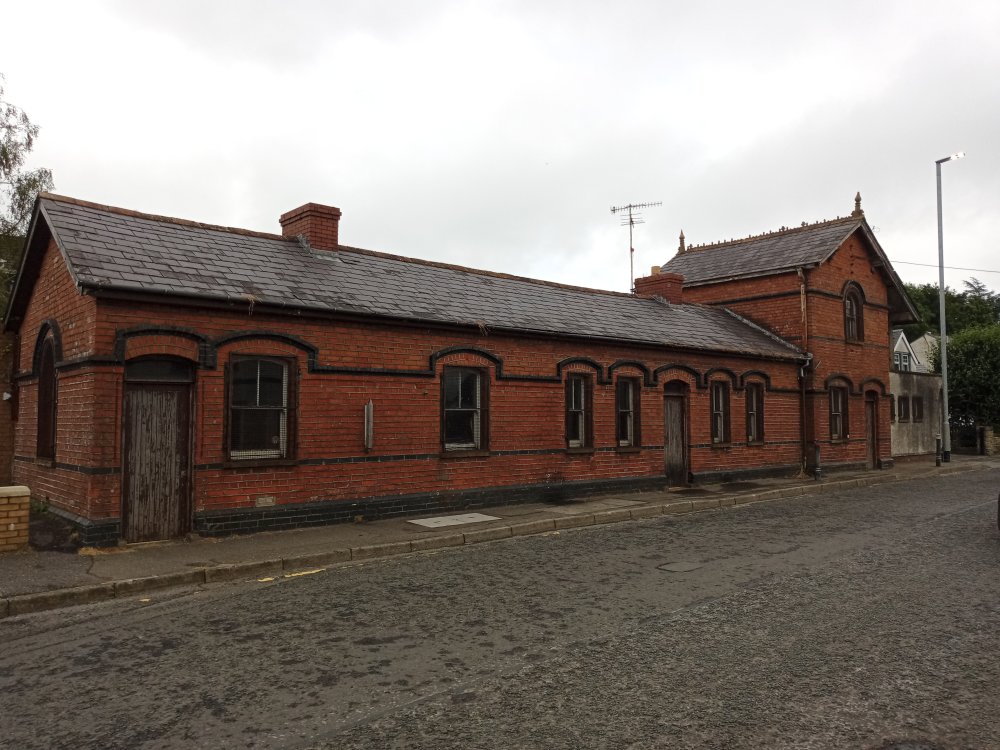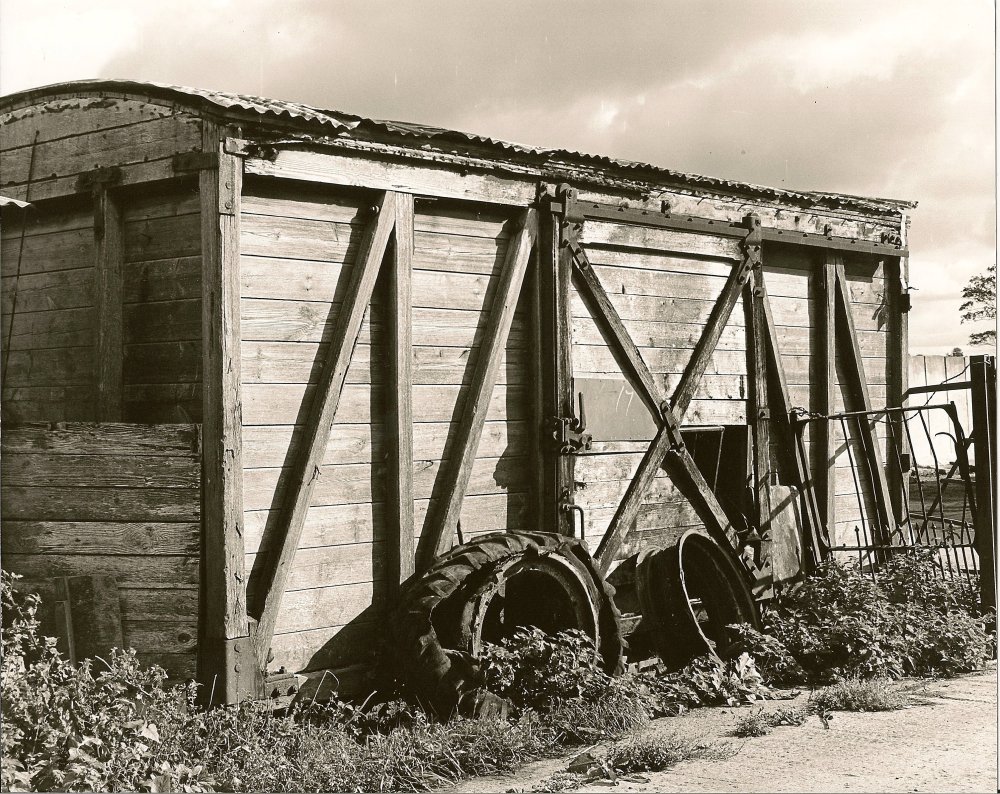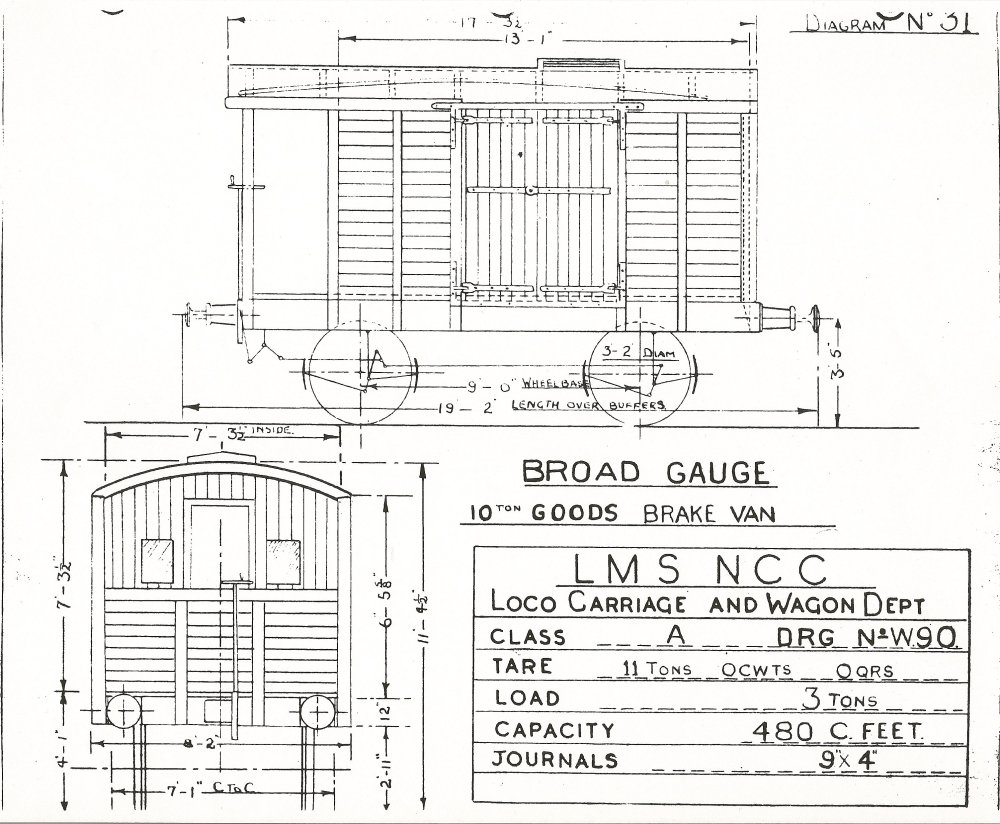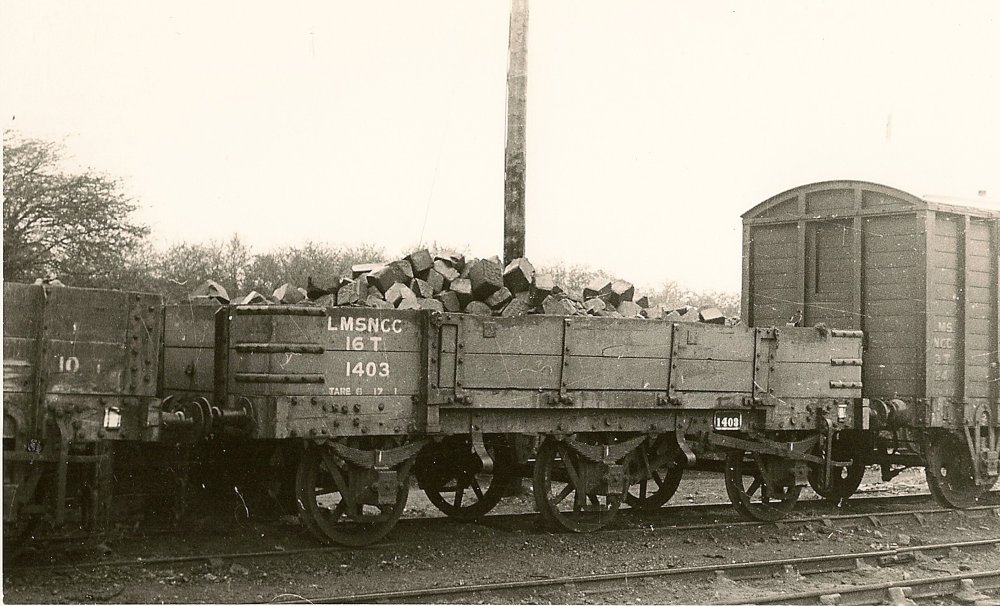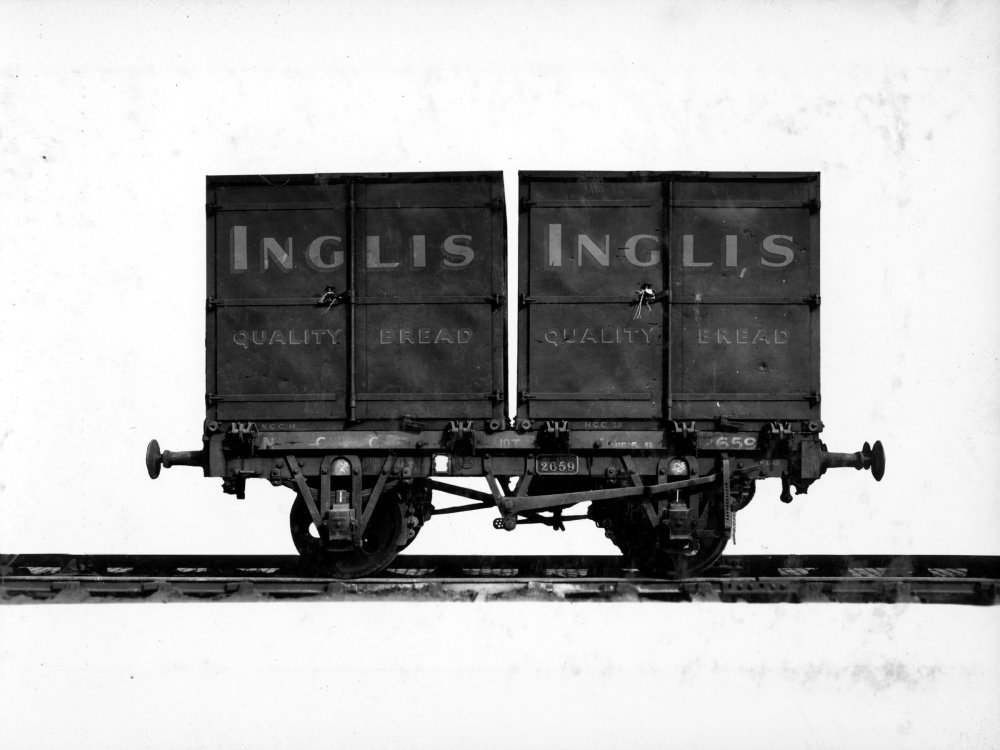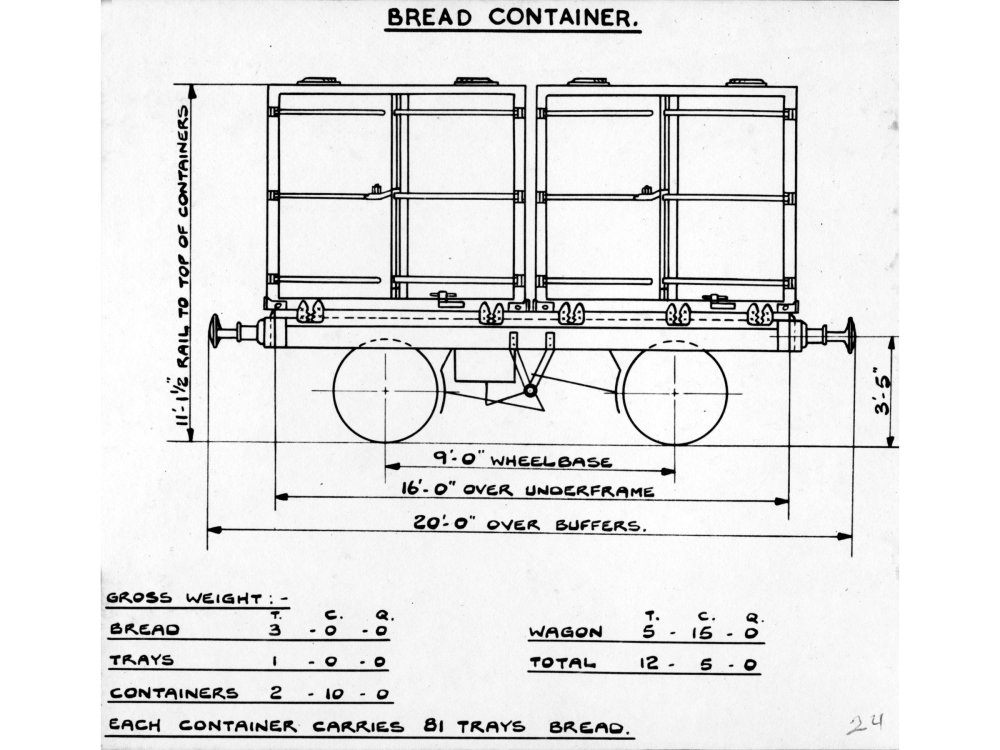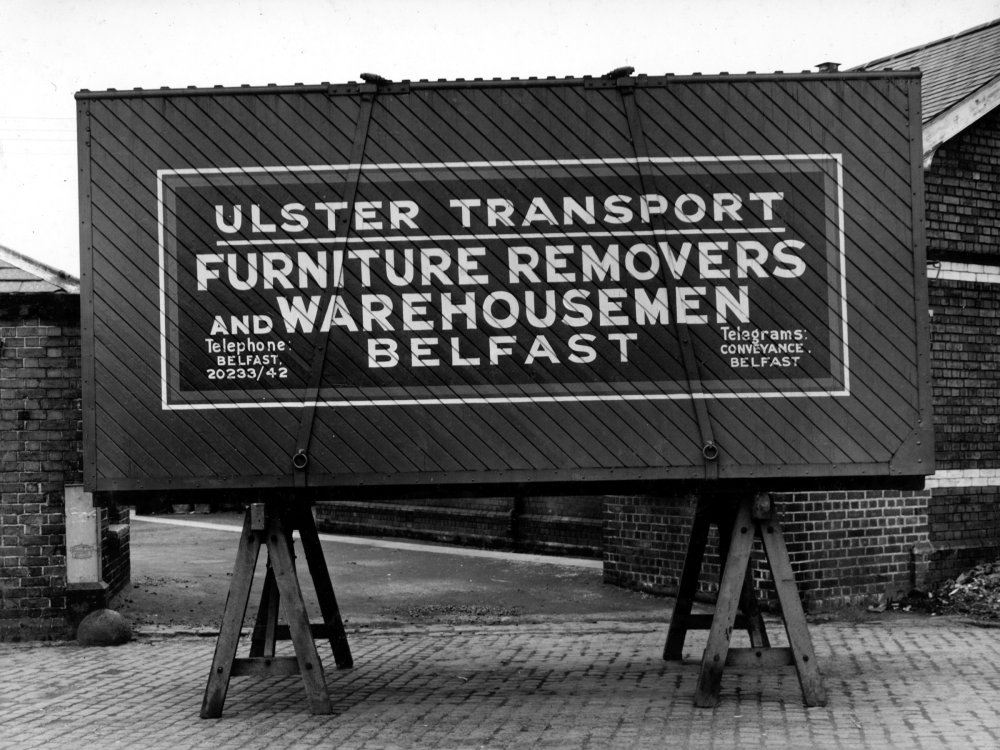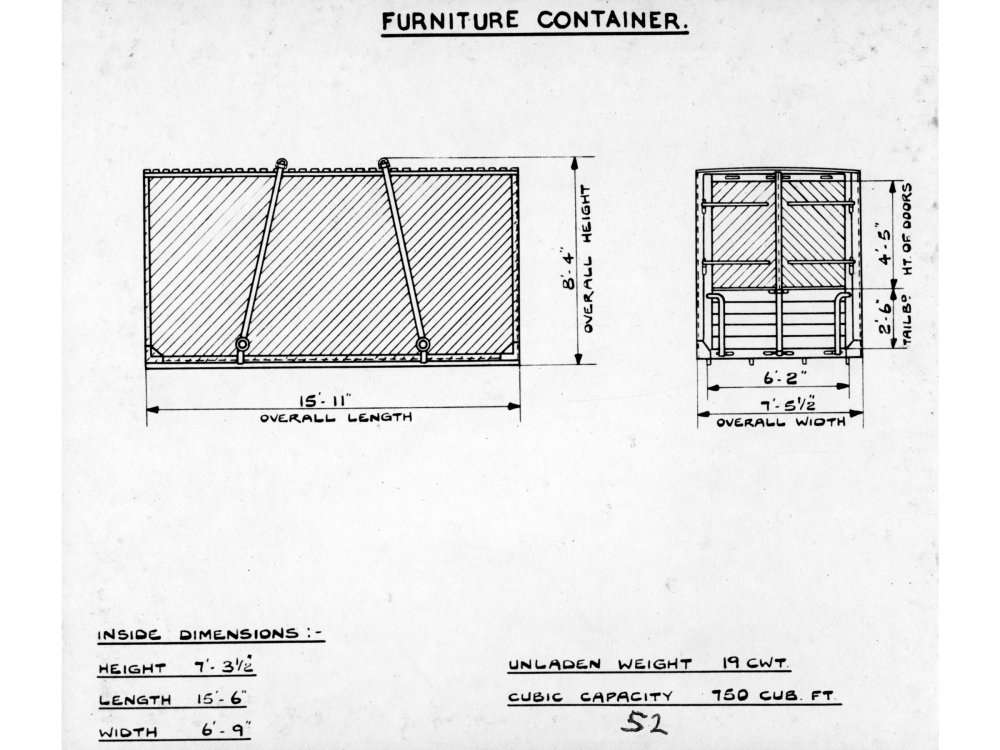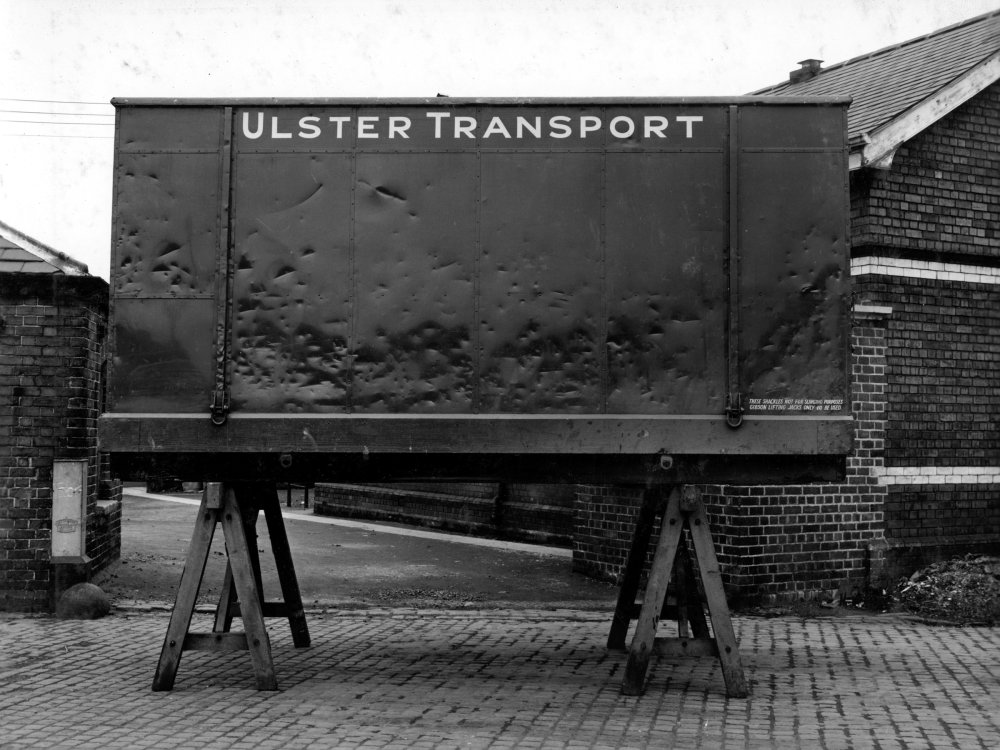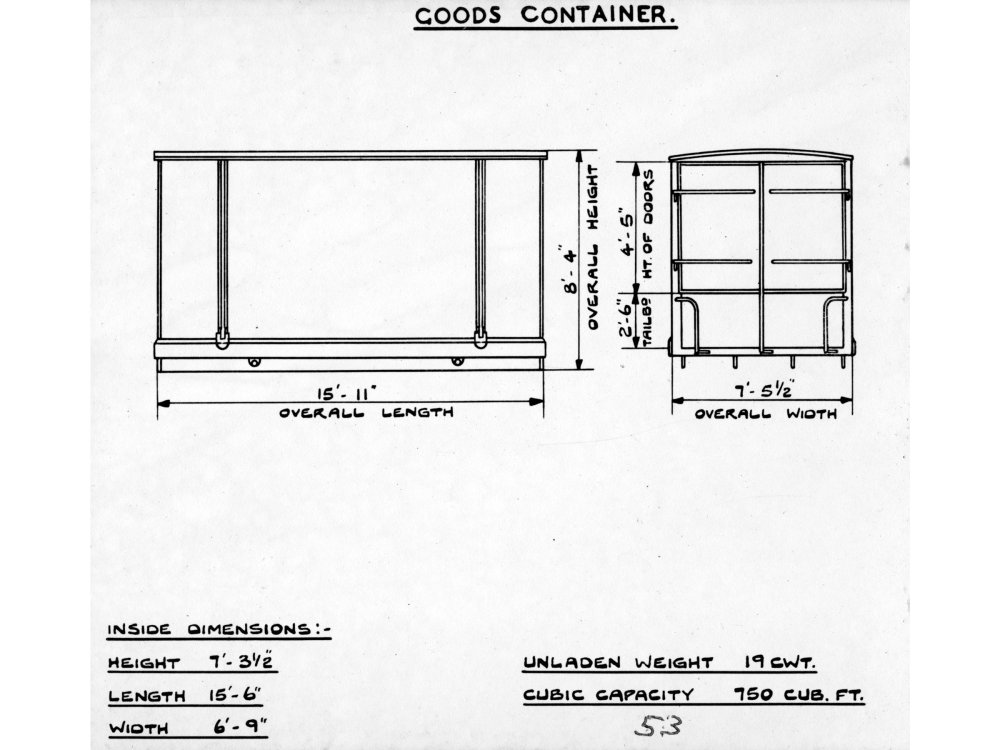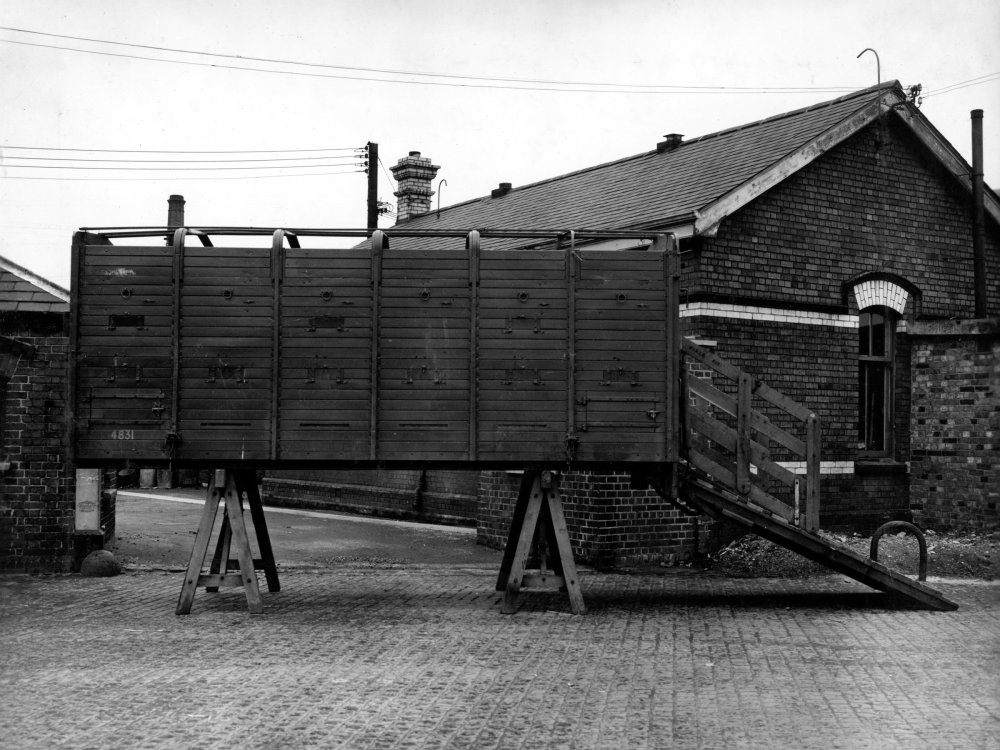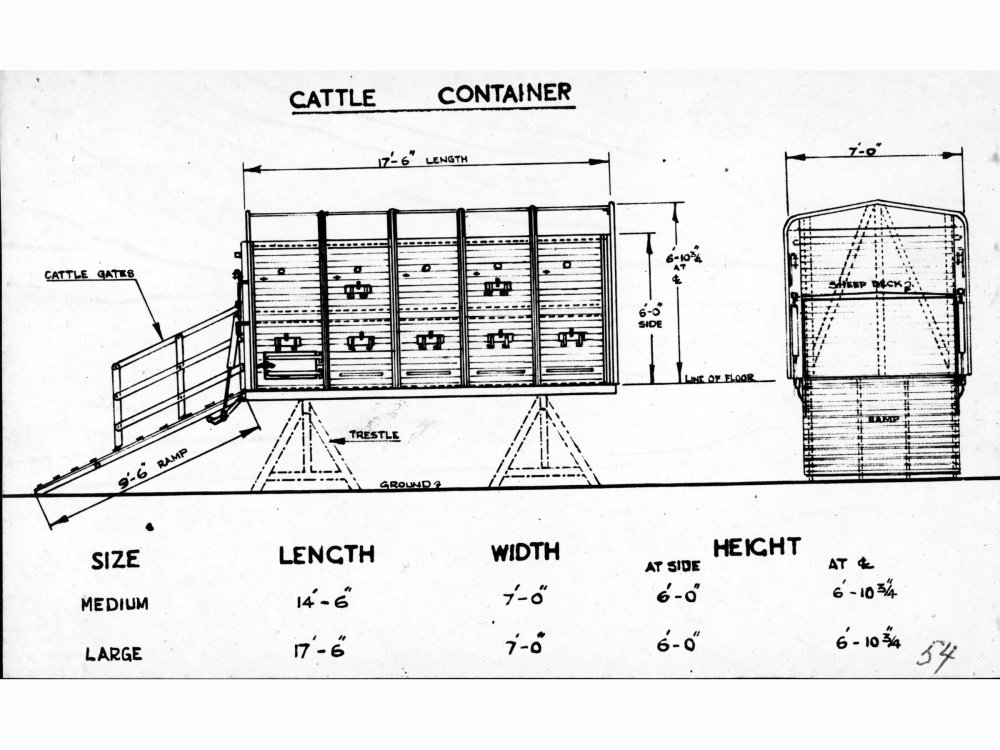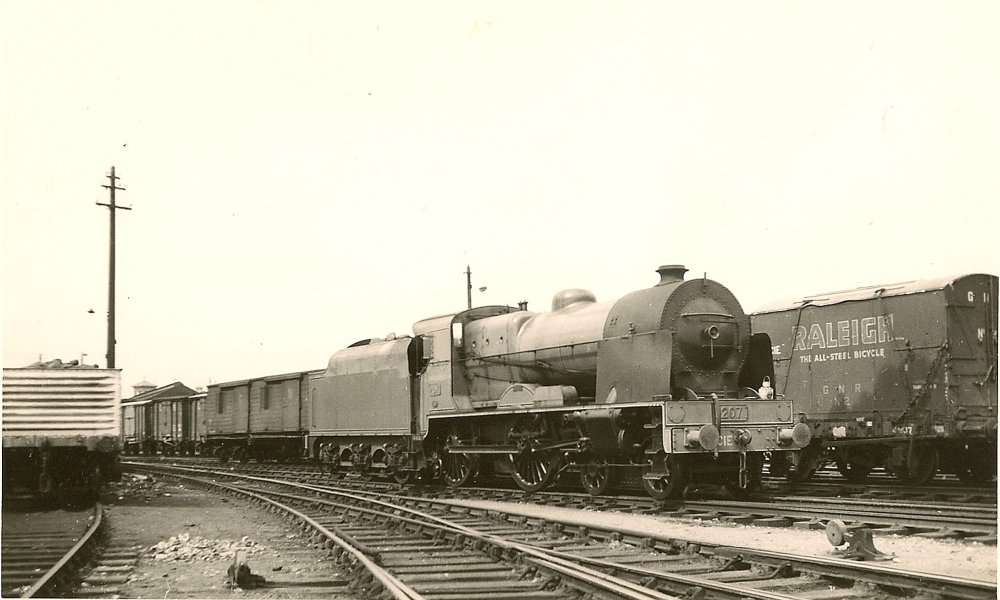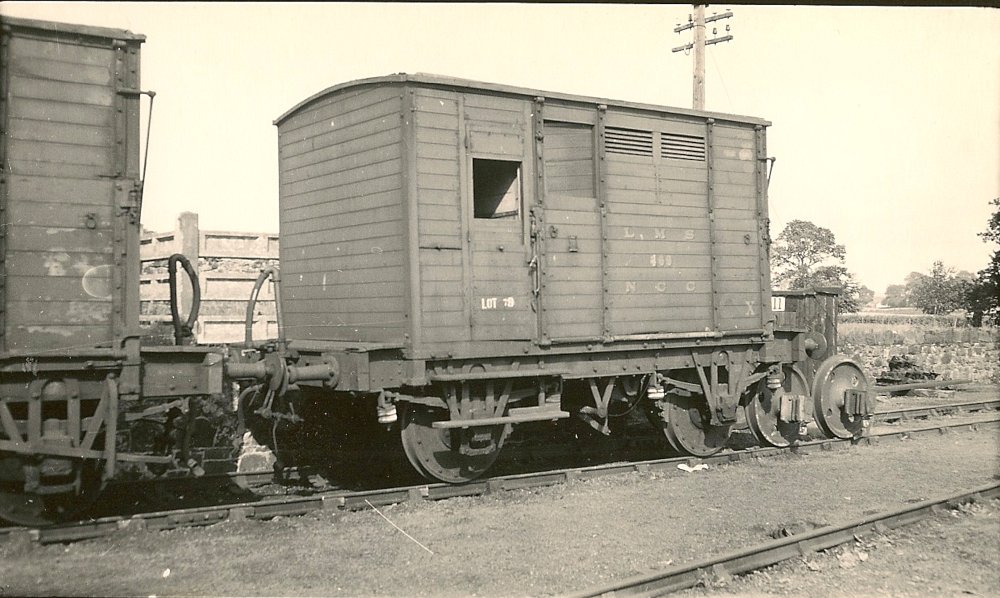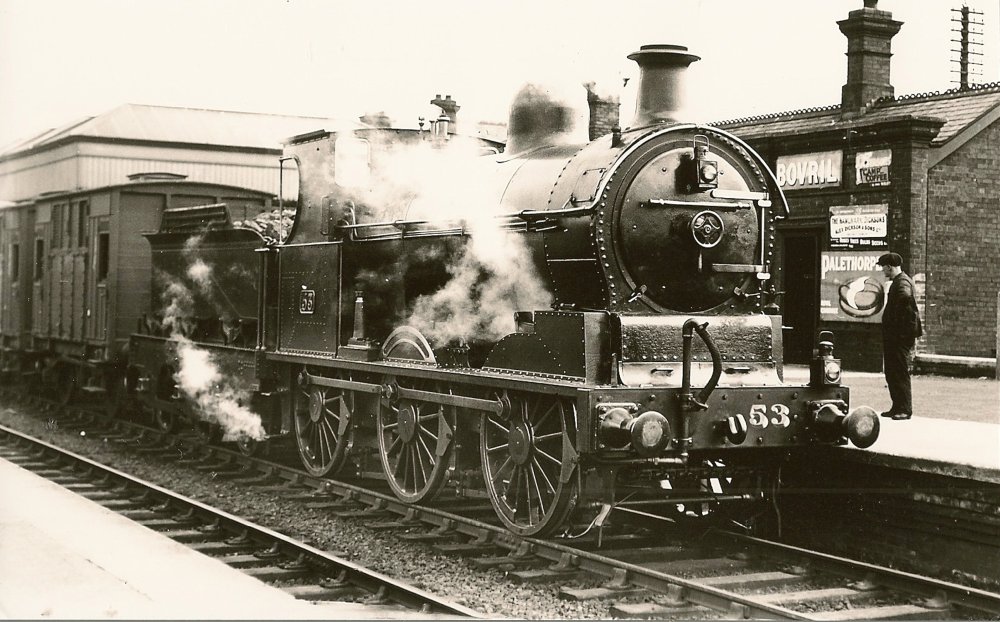
Dun Aucht
Members-
Posts
11 -
Joined
-
Last visited
-
Days Won
1
Dun Aucht last won the day on February 5 2023
Dun Aucht had the most liked content!
Recent Profile Visitors
The recent visitors block is disabled and is not being shown to other users.
Dun Aucht's Achievements
-
-
Photo of the grounded NCC wartime 12T van. A lot of railway vans were sold off to farmers who used them all over the country. There were still a fair few in the Sperrins in the mid 1990s. Most have decayed and since been burned, the surviving metal being sold for scrap.
-
-
Horse transport and boxes on the Irish rail system
Dun Aucht replied to Colin R's topic in Irish Models
Leslie Unfortunately not. I had extensive correspondence with Richard Casserley over 30 years ago and obtained lots of prints of wagons and coaches. I don't know what happened to their photos when Richard passed. Glad I got a lot of the material when I did. -
Eventually found the Henry Casserley photograph of the 6 wheel NCC wagon at Cookstown after having data recovered from my previous PC which crashed.
-
Bit late to this thread. NCC Bread Containers were fitted to flat wagons. The NCC used a different system of fixing the bread containers to their wagons than the GNR(I). It is one of the reasons the Inglis bread containers were different shades on the GNR(I) and NCC. It was an easy way of making sure the right containers went to the right railway. Have attached photos and drawing from the album prepared by the UTA at the time of purchase of the NCC. As far as I am aware, the cattle container was an experiment to move cattle by road and not have to reload them into a wagon. There are two versions of container, the wooden one is marked for furniture and the steel one is just branded Ulster Transport. It obviously has had use judging by the dings in the body, but has been given a smart repaint for the photographs. I have also attached a Henry Casserley photograph of a VS Class 4-4-0 at Dublin with a Raleigh bicycle container to the left of the loco. There are not many photos of these containers known, but Raleigh Ireland did move a lot of the produce from their factory in Dublin by rail.
-
Horse transport and boxes on the Irish rail system
Dun Aucht replied to Colin R's topic in Irish Models
The attack on the train at Adavolye in 1921. My great Uncle, my maternal grandmother's youngest brother, was on the train that was attacked. He was in the 10th Hussars and been providing the Sovereign's escort to King George V for the state opening of parliament in the north. My great Uncle was injured and later died some months later of pneumonia. Horse traffic on the NCC. The NCC certainly did have horseboxes for the conveyance of horse traffic. There were point to point races held at Lisnalinchy in the 1920s on the Ballyclare Branch. I have attached a couple of photographs, one by Des Coakham of the NCC V9 Horsebox. Bill Bedford did a brass kit of this wagon around 30 years ago. The Second photograph is by Henry Casserley of E1 0-6-0 No.53 at Ballymena in August 1930 with a couple of horseboxes on the drawbar. I believe they are GNR(I) examples. -
NCC Practice. The BNCR used a pattern of two bolt chair. The RPSI Had some at Whitehead over 30 years ago, but they were useless for BS90 bullhead rail. The MRNCC used a three bolt chair known by the PW men as the 'Bullnose' as it resembled a Morris radiator in shape and was designed for BXTD 83lb per yard rail. They were locally cast in Belfast. The LMSNCC developed a three bolt chair of a different shape which was called 'The smoothing Iron' by the PW men. Again it was a BXTD for 85lb per yard rail and was cast by Harland & Wolff. The earlier MR chairs worked with the heavier 85lb rails. Rail sleepers were 9 foot in length. Wartime supplied sleepers were only 8' 6". The chairs supplied to the NCC were LNER S1 pattern chairs for 90lb per yard rail. GNR(I) Practice. The GNR(I) had used cast chairs which were keyed inside the five foot. The chairs at the end of the track panel had an apex which pointed to the rail joint. These were for use with wooden sleepers and were cast in the works at Dundalk. They later used a four bolt S1 pattern chair for use with 90lb per yard rail with wooden sleepers. The GNR(I) was a pioneer in using concrete sleepers. The UTA mixed materials from the GNR(I) and the NCC on the remaining lines, as they used recovered materials for track repairs. During the time the line from Bleach Green to Antrim was closed, I interviewed the late Davy McClean retired PW Inspector and we went to the closed line to look at track panels. There were a mixture of chairs even within a track panel. The earlier pattern GNR(I) chairs noted above were in the former GNR(I) Bay Platform at Antrim circa 1987. They had gone within 12 months. THE NCC Appendix to the working Time Table list the maximum loading of wagons and coaches for each of the locomotive power classifications for the Bleach Green incline. Earlier rail keys were wood. They were replaced by the sprung metal type which tended to remain in situ for longer, before starting to move. Each PW length was walked daily by one member of the gang, checking the rail keys, rail joints and checking for broken rails. The NCC Director's Minute Books recorded any record of any broken rails.
-
From my research notes LMS D2073, Lot 1325, High sided Goods Wagon NCC, similar to LMS D2072, Diagram Book Page 12E, Drawing No.13/3439. Wartime replacement built by the LNER at Doncaster. Although reference is made similar to D2072 which was a wartime diagram covering 500 wagon built between Derby and Wolverton during 1942/43, Lot No. 1322, running nos. 415300 – 415799, R. J. Essery identifies this diagram as being similar to D1892 but built with narrower planks. The point being that the D1892 wagons had a steel underframe, whereas the NCC had a wooden underframe. The NCC version did have disc wheels and oil journals. The last survivors had cut down ends courtesy of the UTA. One did survive at Whitehead. Wagon diagram is shown in 'An Illustrated History of LMS Wagons – Volume 1', page 80. The High Sided Goods Wagon did not have the rectangular NCC Wagon plates. Instead they just had an oval Doncaster makers plate with the date and LMS Lot No. on it. It was fixed to the solebar underneath the door. Some of these wagons were cut down at the ends and sides by the UTA, possibly for use at Courtaulds. LMS D2074, Lot 1326, Goods Van NCC, Diagram Book Page 9M, Drawing No. 13/3447. Wartime replacement built by the LNER at Doncaster. NCC grounded body number 2475 had a build date of 1943. Wagon diagram is shown in 'An Illustrated History of LMS Wagons – Volume 1' on page 56 asFigure 40. R.J. Essery asserts the wagon as being similar to Midland Railway wagon diagram D363 and refers to the plates 194 and 195 on page 135 of Midland Railway Wagons Volume 1. The wagon diagram is shown on page 131 of the same volume, but the two plates show wagons with the same arrangement of side stanchions as the NCC version built to MR Lots 938 & 941. One of these lots was for fitted vehicles. The earlier MR diagram was rate 10 tons as opposed to the NCC version at 12 tons. The D363 is also one foot shorter and obviously narrower. There are differences in wagon height, wheel size, rail to top of floor height as well as gauge and the detail differences obviously warranted a new drawing. The drawing from the diagram book shows the wagon with 4 torpedo vents, but photographic evidence of the wagons as running on the NCC/UTA rail network contradicts this. The NCC running numbers were 2401 – 2500 and the style of wagon plate was the LMS D pattern, not the usual NCC oblong wagon plate. Some of these vans may have been fitted or piped by the UTA for use in service trains for parcels traffic. Such a vehicle is shown in a train at Portadown in 1964 on page 52 of 'The Steaming Sixties – No.11 The Ulster Transport Authority', Irwell Press, Clophill Bedfordshire, 2015, ISBN: 978-1-906919-77-1. Both of these differed from usual NCC practice as the W irons were inside the solebars, rather than fixed on the outside. The journals were standard LMS oil journals.
-
Just rejoined this forum after many years. The Wagon was a 10T NCC Brake van as correctly identified by other posters above. The van body was near Ballyboley and I measured it up to produce drawings over 30 years ago. It was a lot more complete then.
-
Dun Aucht joined the community
-
New etches from Caley Coaches in Scotland.
Dun Aucht replied to jhb171achill's topic in Irish Models
I commissioned Alistair Wright to produce Irish W Irons for GNR(I) wagons. I bought etches from him for building NCC Coaches. The etches were produced for 4mm /21mm gauge. That must be nearly 40 years ago now.- 1 reply
-
- 1
-

.png.c363cdf5c3fb7955cd92a55eb6dbbae0.png)
